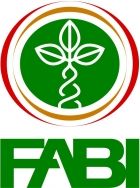Press release -
INVASIVE INSECTS – POTENTIAL VECTORS OF PLANT PATHOGENS
Besides the direct damage that insects cause to plants by their feeding, some insects also a pose a serious indirect threat to the plant’s health by acting as vectors of plant pathogens. In fact, numerous plant pathogens require insects for their dispersal. This includes the well known example of Dutch Elm Disease caused by Ophiostoma ulmi, and spread by Elm Bark Beetles.
Various insects have been recorded to transmit plant pathogens in nurseries. Of these, fungus gnats (flies in the family Sciaridae) are often prevalent in nurseries of various crops and have been recorded to transmit Botrytis cinerea, Verticillium albo-atrum and Fusarium oxysporum f. sp. radicis-lycopersici. The most serious pathogen in pine nurseries of South Africa is the pitch canker fungus, Fusarium circinatum. Insects are known to be associated with the spread of this fungus on pine trees in forests, but no association between insects and this fungus has been recorded on pine seedlings in nurseries.
Our study was initiated to examine the presence, species composition and genetic diversity of fungus gnats present in South African pine nurseries and to examine their possible association with F. circinatum. Only one fungus gnat species, Bradysia difformis, was detected, and this species was detected in all the main pine nurseries. Examination of a 395bp portion of the COI gene from nursery populations in South Africa and Europe indicated a historical connection between the two regions. South African populations showed a high genetic diversity and low genetic differentiation, reflecting multiple and / or relatively large introductions of B. difformis into South Africa, with frequent movement between nurseries (probably with the movement of plants). These results indicate the ease at which invasive insects can enter into and spread within the country. Fortunately, investigations using standard isolation techniques and sensitive DNA markers have shown that adult fungus gnats do not have a major role in the transmission of F. circinatum. The role of the larvae requires further examination.

Key reference:
Hurley BP, Slippers B, Wingfield BD, Govender P, Smith JE, Wingfield MJ. 2009. Genetic diversity of Bradysia difformis (Sciaridae: Diptera) populations reflects movement of an invasive insect between forestry nurseries. Biological Invasions DOI 10.1007/s10530-009-9509-1.
Other references:
Hurley BP, Govender P, Coutinho TA, Wingfield BD, Wingfield MJ. 2007. Fungus gnats and other Diptera and their possible association with the pitch canker fungus. South African Journal of Science 103:43-46.
Hurley BP, Slippers B, Coutinho TA, Wingfield BD, Govender P, Wingfield MJ. 2007. Molecular detection of fungi carried by Bradysia diffomris (Sciaridae: Diptera) in forestry nurseries of South Africa. Southern Hemisphere Forestry Journal 69:103-109.
Topics
- Environment, Energy
FABI was established on the foundation of the highly successful and internationally acclaimed Tree Protection Co-operative Programme (TPCP).

